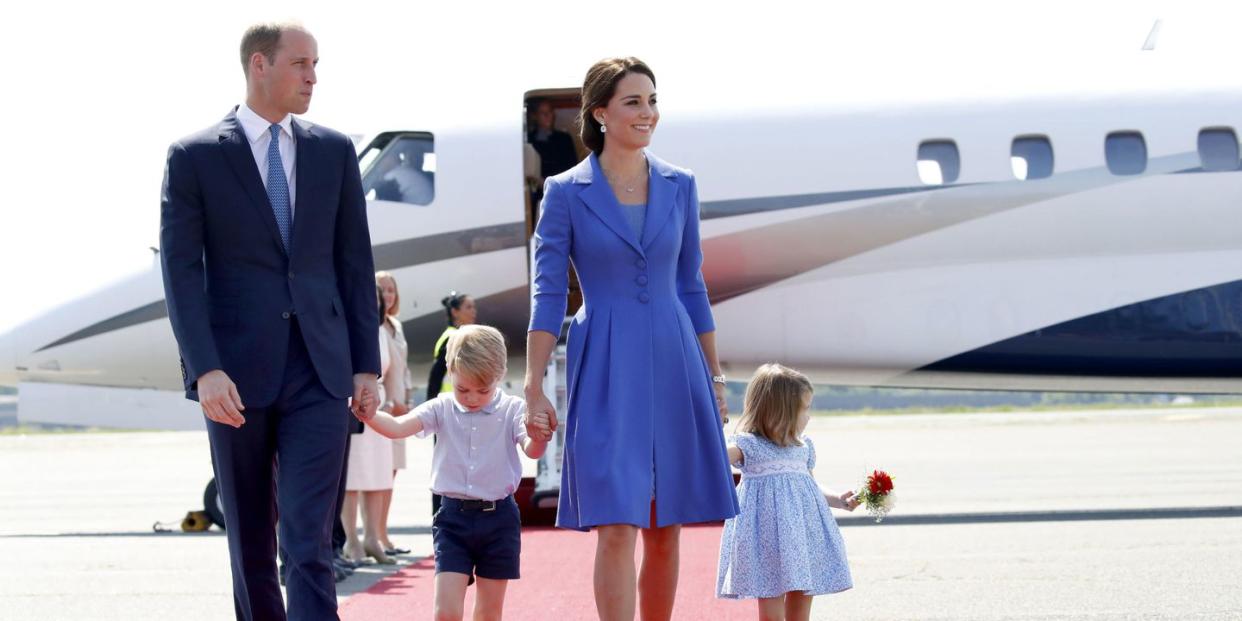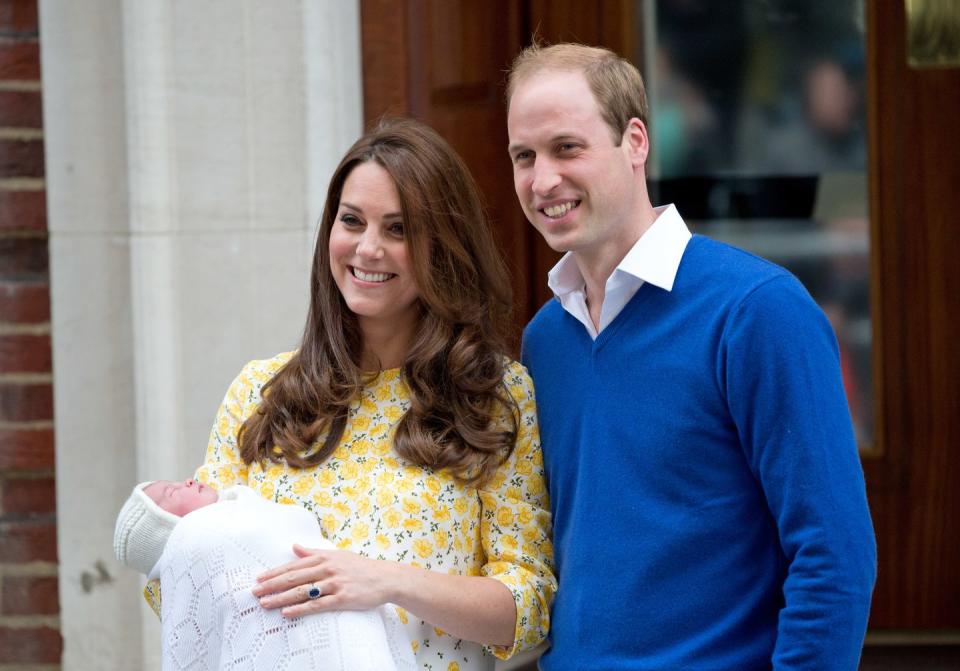What to Know About the New Royal Baby

The royal baby is here! We repeat, a royal baby is here! The Duke and Duchess of Cambridge officially welcomed a newborn son on April 23, 2018, at 11:01 a.m. and the world could not be more excited. Here's everything we know so far about the Prince George and Princess Charlotte's new playmate.
The prince was born on April 23.
The baby arrived on Saint George's Day, an important feast day in both Christian and English tradition. Saint George has served as the country's patron saint since before the Tudor period. The littlest Cambridge will likely some share birthday festivities with his great-grandmother; Queen Elizabeth II was born on April 21, 1926.
The birth took place at the Lindo Wing.
In addition to Prince George and Princess Charlotte, both Prince William and Prince Harry came into the world at the Lindo Wing of St. Mary's Hospital in London. The spot is known for its extreme privacy - even Amal Clooney gave birth there!

Now photographers are gathered outside the famous brown doors as they wait for the family to emerge.
Back to becoming the most famous and watched set of brown swing doors in the world #Lindowing #royalbaby pic.twitter.com/lr5TsyALXG
- Chris Jackson (@ChrisJack_Getty) April 23, 2018
Potential names include Arthur and James.
Betting sites have carefully adjusted the odds on the future royal's official moniker. According to Ladbrokes, Arthur comes in as the favorite at 6/4. James is at 5/1 and Albert is at 6/1. Other potential options include Philip, Thomas, Alexander, Henry, and Alfred, and Frederick. All of these suggestions follow the royal tradition of honoring past monarchs and relatives. Of course, royal babies usually receive at least three names, but no surnames.

The baby already has an official title.
Just like Prince George and Princess Charlotte, this baby automatically becomes an HRH. He'll be known as "Royal Highness Prince [Name] of Cambridge." He also has the official title "His Royal Highness Prince [Name] of the United Kingdom of Great Britain and Northern Ireland."
The Duchess suffered from hyperemesis gravidarum again.
Just like her previous two pregnancies, Kate Middleton experienced an extreme form of morning sickness known as hyperemesis gravidarum (HG) during the first few months. Symptoms include severe vomiting, constant nausea, dehydration, and weight loss. The condition afflicts roughly 2% of all expecting mothers, and it put Kate in the hospital during her first pregnancy.
While she experienced some serious discomfort during the fall, the Duchess later returned to to her usual smiley self, making plenty of public appearances and taking trips to Norway and Sweden before her maternity leave started on March 23.
The new heir changed British succession history.
For the first time ever, the sex of the royal baby did not impact who's next in line for the throne. Thanks to the passage of the Succession to the Crown Act in 2013, male heirs don't take precedence over their sisters. That mean the baby boy can't "bump" Princess Charlotte from her spot at #4. However, Prince Harry will move down to sixth in line with the arrival of a new niece or nephew, along with the rest of the extended royal relatives.
You Might Also Like


